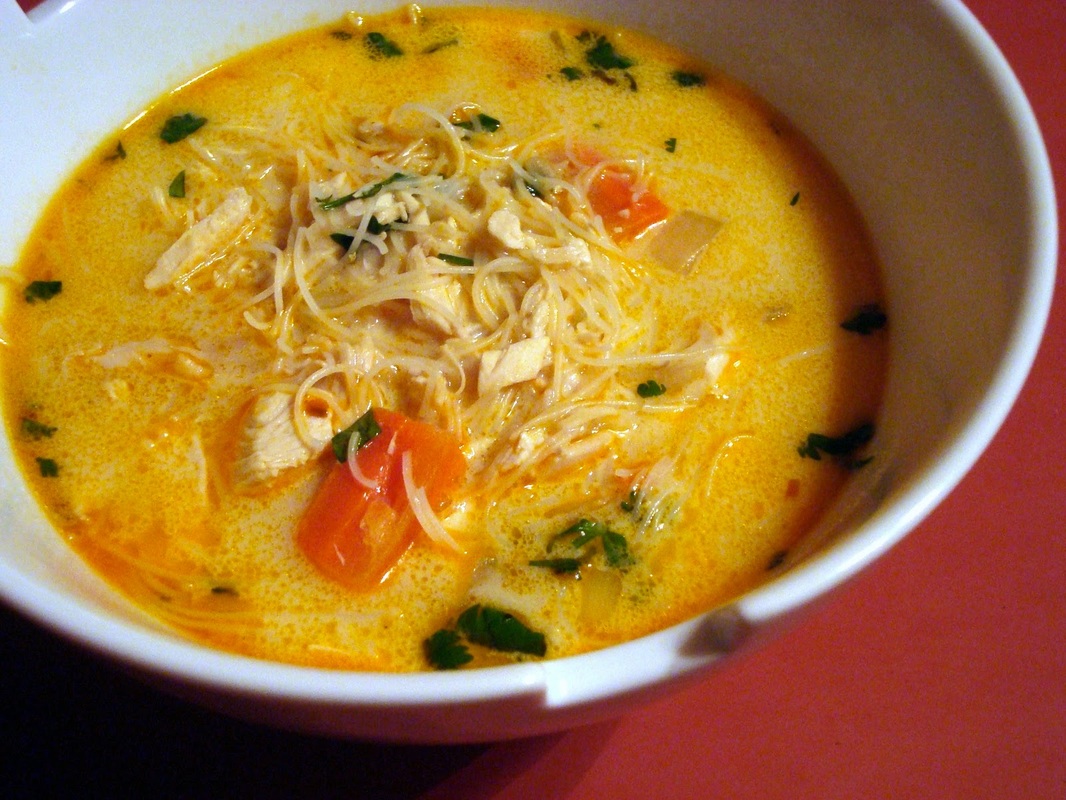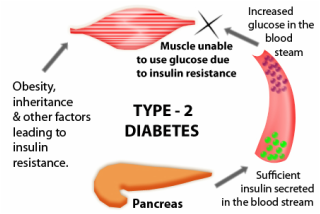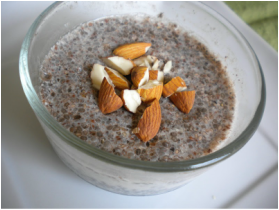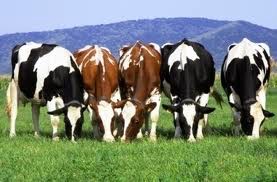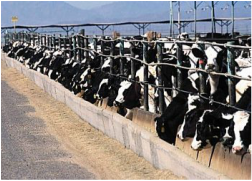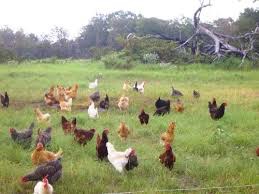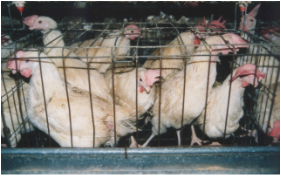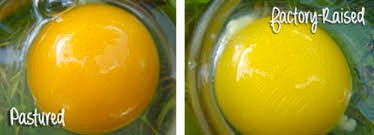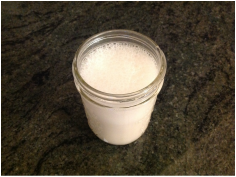|
Well, the Diabetes Summit has ended and it was fabulous - so many great interviews. Hope many of you had the chance to watch. It inspired me to post the following recipe. Serves 6 Ingredients:
Preparation: 1. In a large sauté pan, heat the coconut oil at medium-high heat. 2. Add the onions, garlic, and ginger and sauté for 5 minutes or until onions are translucent. 3. Add curry and cayenne and stir to coat onions, garlic, and ginger. 4. Add chicken, sprinkle with ½ teaspoon of the salt and sear on all sides. 5. Add carrots, cauliflower, and pepper and cook 3-4 minutes. 6. Add apple, coconut milk, and remaining salt and simmer on low heat for 10-15 minutes until chicken is cooked through. 7. Add peas and simmer 3 more minutes. 8. Garnish with cilantro and serve. Source: Adapted from Mark Hyman, The Blood Sugar Solution. Nutritional highlights: Apple – excellent source of vitamin C, pectin (soluble fiber), and potassium. Associated with a reduced risk of type 2 diabetes. High content of quercetin, which acts as an anti-inflammatory and antioxidant. Good for bowel regularity. Carrots – Carrots are an excellent source of antioxidant compounds that help protect against cardiovascular disease and cancer. Carrots provide the highest source of carotenes and also provide excellent levels of vitamin K, biotin, and fiber and very good levels of vitamins C and B6, potassium, and thiamine. Cauliflower – excellent source of vitamin K, vitamin C, fiber, potassium, phosphorus, and B vitamins. Helps prevent cancer by increasing the activity of enzymes that disable and eliminate carcinogens. Cayenne pepper– stimulates and enhances digestion. Has the ability to increase basal metabolic rate and stimulate the burning of fat for energy (garlic and ginger have a similar effect). Garlic – truly a remarkable medicinal plant. There are many therapeutic effects of garlic: helps lower total serum cholesterol levels, helps with heart disease, high blood pressure, diabetes, Candida infections, asthma, respiratory tract infections and gastrointestinal complaints. It is an excellent source of vitamin B6, manganese, selenium, and vitamin C. It is also a good source of other minerals, including phosphorus, calcium, potassium, iron, and copper. Ginger – alleviates symptoms of gastrointestinal distress; anti-nausea. Has antioxidant and anti-inflammatory effects. Onion – has antioxidant, anti-inflammatory, antibiotic, and antiviral properties and helps remove parasites and heavy metals from the system. Good source of vitamins C, B6, biotin, chromium, dietary fiber, folic acid, vitamins B1 and K, and the flavonoid quercetin, which acts as an anti-inflammatory and antioxidant. Has significant blood sugar-lowering action. Liberal use of garlic and onions has healing effects for diabetes and cancer. Peas – good source of protein, B vitamins, phosphorus, manganese, magnesium, potassium, iron, vitamin C, vitamin K, and carotenes. Red bell pepper – nutrient dense vegetable. Contains zeaxanthin, which helps prevent cataracts. Excellent source of vitamin C, beta-carotene, vitamin K, thiamine, folic acid, and vitamin B6. References:
Murray, M. (2005). The encyclopedia of healing foods. New York, NY: Atria Books. Wood, R. (2010). The new whole foods encyclopedia. New York, NY: Penguin Books.
1 Comment
Ever since a family member was diagnosed with type 2 diabetes, I have been passionate about learning as much as possible about this disease. This is a lifestyle disease and can be prevented and even reversed. Yes, even reversed! Type 2 diabetes mellitus is a growing epidemic in the United States and globally. A major risk factor is obesity. Approximately 80-90% of individuals with type 2 diabetes are obese. Other risk factors include family history, increased waist to hip ratio, race/ethnicity, impaired glucose tolerance, hypertension, and high triglyceride levels. The prevalence of type 2 diabetes has tripled since the 1980s and the number of diabetics will increase from 1 in 10 Americans today to 1 in 3 by the middle of this century. These are staggering statistics! The primary organ affected by type 2 diabetes is the pancreas. It is characterized by inadequate utilization of insulin and results in excessive amounts of glucose in the blood and urine. In other words, the pancreas produces too much insulin in which the body cells become resistant. Insulin is a hormone that is essential for the proper metabolism of blood sugar (glucose). Glucose comes from the foods (carbohydrates) that we eat. It is an important energy source that is needed by all the cells and organs of our bodies. When the body is unable to move glucose from the bloodstream into the cells, our bodies cannot maintain normal blood glucose levels (70-99mg/dL). The pancreas responds by producing more and more insulin to keep up with the body’s glucose demands, but it eventually loses the battle. This is known as insulin resistance, which is a precursor to type 2 diabetes. Classical symptoms include excessive thirst, excessive eating, and excessive urination. Other generalized symptoms include fatigue, diarrhea, visual disturbance, dizziness, and headache. Excessive eating and a sedentary lifestyle are contributing factors to diabetes. We are an overfed and malnourished nation. A Standard American Diet is full of processed foods that are high in calories and stripped of valuable fiber and essential nutrients. Eating a diet of whole, organic, unprocessed, and seasonal foods is a step in the right direction if we want to reverse this disease. In addition, we need to start moving our bodies. Exercise will not only promote a leaner body mass, but it will also help improve sensitivity to insulin. Insulin is a fat storage hormone that drives appetite and inflammation. Dr. Mark Hyman posits, “When your diet is full of empty calories and an abundance of quickly absorbed sugars, liquid calories, and refined carbohydrates (bread, pasta, rice, potatoes), your cells slowly become resistant or numb to the effects of insulin and need more and more of it to keep your blood sugar levels balanced”. Although weight loss is important, the quality of food that you put in your body is of even greater importance. Food is information that quickly changes your metabolism and genes. It is no longer simply a matter of calories in – calories out, but rather the quality of the calories that we are consuming. To learn more about diabetes, please join me in watching The Diabetes Summit (www.thediabetessummit.com). It is a free online summit that is available from April 18-25th. I just listened to an interview with Dr. Brian Mowll and Dr. Jody Stanislaw on lowering HbA1c levels. Fascinating stuff! Also be sure to check out my blog. I will be posting some yummy recipes that are designed to help regulate blood sugar levels. ---------------------------------------------------------------------------------------------------------------------------
References: Hyman, M. (2012). The blood sugar solution. New York, NY: Little, Brown and Company. Murray, M. (2003). How to prevent and treat diabetes with natural medicine. New York, NY: Riverhead Books. Rakel, D. (2007). Integrative medicine. Philadelphia, PA: Saunders Elsevier.
Ingredients:
Preparation:
Adapted from: Kasey Caletti, Natural Chef, Bauman College Nutritional highlights of this yummy dessert: Almonds – monounsaturated fat that allows body to utilize insulin more effectively and regulates blood glucose. Has some protein, loads of fiber, zinc, magnesium, copper, and manganese. Chia seeds – historically known as an endurance food that has extremely high sources of omega-3 fatty acids. Omega-3 fatty acids contain EPA, which stimulates secretion of the hormone leptin. Leptin helps regulate food intake, metabolism, and body weight. Relieves constipation, reduces nervousness, treats insomnia, and improves mental focus. Cinnamon – used as a glucose-lowering agent. Enhances cells’ insulin sensitivity. Found to reduce fasting blood glucose, triglycerides, LDL and total cholesterol. Coconut milk – a health promoting fat that has antibacterial, antifungal, and antiviral properties. It has a thermogenic (fat-burning) effect and promotes weight loss. Dates – an excellent source of soluble fiber, B vitamins, potassium, magnesium, iron, phosphorus, folic acid, zinc, and selenium. Dates are among the most alkaline of foods and have been shown to delay the absorption of glucose in the small intestine, thus helping to keep blood sugar levels even. They are also rich in antioxidant and anticancer compounds. Sources:
Murray, M. (2005). The encyclopedia of healing foods. New York, NY: Atria Books. Wood, R. (2010). The new whole foods encyclopedia. New York, NY: Penguin Books. One of my previous posts talked about the importance of organic produce - mainly fruits and vegetables. There is also value in buying organic , pasture-raised animal products. The quality of animal protein is dependent on the health of the animal; and the health of the animal depends on the life it had, what it ate, and where it lived. The meat, milk, and eggs in our supermarkets are highly contaminated and vastly inferior in nutritional quality to those available to our ancestors just a few decades ago. Healthier animals provide healthier food for humans. Organic means that a food is free of fertilizers, pesticides, growth hormones, and antibiotics. Let’s take a look at the differences between pasture-raised and pen- raised animals.
Milk
Nutritional Benefits: Grass -fed vs. Grain-fed beef
Butter Fat-soluble vitamins (A, D, E, K) occur in large amounts only when butter comes from cows eating green grass. Butter from pasture-raised cows contains CLA, which has strong anti-cancer properties. It also encourages build-up of muscle and prevents weight gain. CLA disappears when cows are fed even small amounts of grain or processed foods.
Note the vibrant color of the egg yolk from pasture-raised chickens. Make an effort to obtain organic beef, lamb, and chicken. Other good meat choices include buffalo, wild game (deer) and game birds like duck, geese, pheasant, and wild turkey. To help you find small, local farms in your area (searchable by zip code), try: www.localharvest.org or www.eatwild.com. In addition, seafood is a great source of animal protein. It tends to be very digestible and contains a great variety of trace minerals. Choose wild fish over farm-raised, which are often fed soy food instead of the healthier insects, larvae, and smaller fish that is part of a wild fish’s diet. Farmed fish also are given antibiotics and injected with dyes (salmon). To make healthy seafood choices, check out Monterey Bay Aquarium’s Seafood Watch website at http://www.seafoodwatch.org/cr/ seafoodwatch.aspx. Sources: Fallon, S. (2001). Nourishing traditions. Washington, DC: New Trends Publishing. Lopez-Bote, C.J. et al. (1998). Effect of free range feeding on omega-3 fatty acids and alpha-tocopherol content and oxidative stability of eggs. Animal Feed Science & Technology. 72: 33-40. Wiedemann Ranch. (2012). www.wrbeefco.com/our-beef/nutritional-benefits-of-grass-fed-beef This truly is the best hot chocolate evah (a respectable girl from Massachusetts would never pronounce an "r" at the end of a word - ha!). I love it! I make this often and it satisfies me completely. The creaminess and frothiness of this drink excites many of the senses - it smells great, looks beautiful, and tastes heavenly. I first make cashew milk as the base of this delectable drink (which you can refrigerate and use later), then I make the hot chocolate - all in a Vitamix. It is really fast and easy. Cashew Milk Put all the ingredients in the Vitamix or a high powered blender and blend for one minute. Voila! You have just made one of the creamiest nut milks you will ever taste. This makes 4 cups of cashew milk. Hot Chocolate To the cashew milk, add:
 If you have a Vitamix with the hot soup setting, place it on this setting and let it blend until finished. It is about a 7-minute cycle and it produces the perfect chocolaty drink. Yum! If you do not have this setting, you can put it in a blender for a couple of minutes. It will not be hot enough, so you will need to pour it into a saucepan and stir over the stove until hot. In a hurry, you could microwave it for one minute. Just beware that the chocolate comes out a bit thicker when using a microwave. The viscosity of the microwave version reminds me of the time I spent in Spain eating churros and chocolate. It is thick and pudding like, but it is still delicious. I serve the hot chocolate in very large coffee mugs, so this recipe only equals 2 servings. If any one remembers The Beverly Hillbillies, I would call these "Jethro servings". Sometimes I just cannot help myself.
|
The information on this website is not intended to diagnose, treat, prevent, or cure any disease.
All of the information on this website is Copyright © CookingwithKristin.com 2017 and may not be downloaded, reproduced, republished or otherwise copied without express written permission of CookingwithKristin.com.
All of the information on this website is Copyright © CookingwithKristin.com 2017 and may not be downloaded, reproduced, republished or otherwise copied without express written permission of CookingwithKristin.com.
